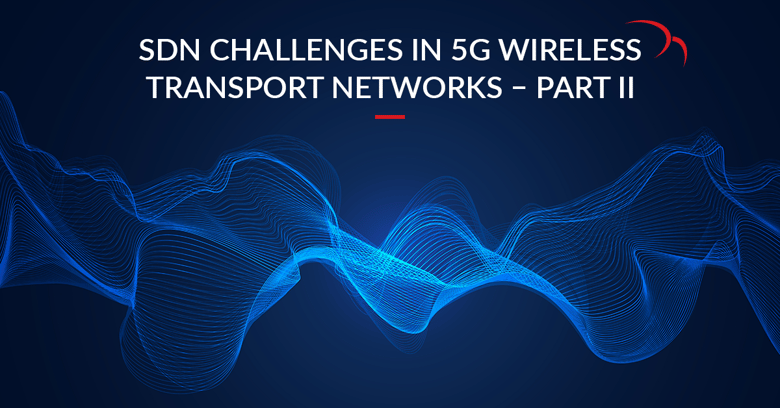In our previous blog, we discussed how the rise of 5G technology is affecting wireless network provisioning and operations. We also took a closer look at existing spectrum licensing approaches, which are clearly slowing down SDN deployments in the 5G wireless transport network.
In this blog, we’ll look at several regulatory-dependent SDN use cases to try to understand the impact of regulation on operators.
1. Tighter frequency reuse, better spectrum efficiency - Managing the links in an integrated way enables the orchestrator to regulate automatically the TX power level of each link in light of propagation conditions. Unlike ATPC, which works on a link basis and monitors either the RSL or the link’s MSE, the SDN controller ensures that the MSE on all links is maximized. In addition, a network-wide view of each link’s performance enables the orchestrator to use wider channels on new and existing links without requiring new frequencies, as well as reduce the angular separation required between two links utilizing the same spectrum. This will cut interference between adjacent channels and enable far great network densification.
Although maximum transmit power varies from country to country, it must be defined in most license applications. It’s not possible to increase transmit power beyond the license limit unless there’s an unlicensed or block spectrum licensing regulation or E-band light licensing.
2. Automated frequency allocation –The idea is to trigger frequency change in order to minimize interference and maximize throughput. To do this, the SDN controller can either halve the bandwidth of links, each using a different half of the spectrum, or allocate a temporary channel and return it to the pool once the fade is gone. Self-coordination of radio channel allocations can also efficiently address on-demand network resource allocation (e.g. mission-critical applications or increased coverage of sporting events) by:
-
- Lighting up dark carriers in events in order to allocate additional network resources to event areas
- Rerouting lower priority traffic to alternative routes
The regulatory issues (licensing) are a fundamental pre-requisite for the applicability of this use case and it can be applied just in unlicensed, block spectrum or E-band light licensing.
3. Network configuration – The network orchestrator can also be used to manage auto-reconfiguration and auto-service restoration when a link upgrade is needed. This makes it easier to upgrade the network topology (e.g. adding radios, replacing IDUs, creating MBL links) with minimum traffic downshift. For example, when a link requires less capacity, it can be dynamically reconfigured from a non-protected configuration to a hot standby configuration. In another example, if there is rain fade and less capacity is required, a MIMO configuration would be adjusted to provide system gain rather than doubling capacity.
The regulatory issues (licensing) are a fundamental pre-requisite for the applicability of this use case and it can be applied just in unlicensed, block spectrum or E-band light licensing.
4. Dynamic spectrum utilization - The majority of the spectrum is underused, and spectrum utilization databases combined with SDN technology can be seen as a rising solution for dynamic spectrum sharing. The database may include information about device locations and their activities, spectrum use, coverage/interference levels, relevant regulations and policies, services and networks, etc. Databases will enable controlled spectrum sharing in order to avoid unnecessary frequent channel switching and will minimize interference. The dynamic spectrum sharing mechanism requires a continuous exchange of information, and the data provided to the system controller has to be up-to-date and highly accurate. For 5G specifically, the SDN concept opens fundamentally new network configuration opportunities. Therefore, it is becoming an increasingly important enabler for handling spectrum efficiently on a self-service basis.
Until now, dynamic spectrum utilization has been difficult to implement, with the main challenge being the regulatory regime. The FCC and Ofcom were the first two spectrum regulators to open up shared access to unused TV White Space spectrum in the US and the UK. The Netherlands and France are moving toward the release of other, primarily military, bands for shared use. The US recently embraced the technology with a three-tier sharing model in the Citizens Band Radio Service (CBRS). Spectrum sharing has been gaining momentum in recent years but extending it to licensed microwave bands does not seem to be feasible in the near future.
Today, wireless backhaul spectrum licensing schemes are not suitable enough to address a full range of 5G network optimization issues. Spectrum regulations and licensing require regulator-driven innovation so that operators can fully benefit from the dynamic programmable control offered by SDN as well as make 5G wireless backhaul economically sustainable. Flexible and innovative licensing approaches combined with SDN capabilities would help operators achieve automated operational processes, and simplify how they control the underlying network through a centralized software layer.
Don't miss our eBook !


